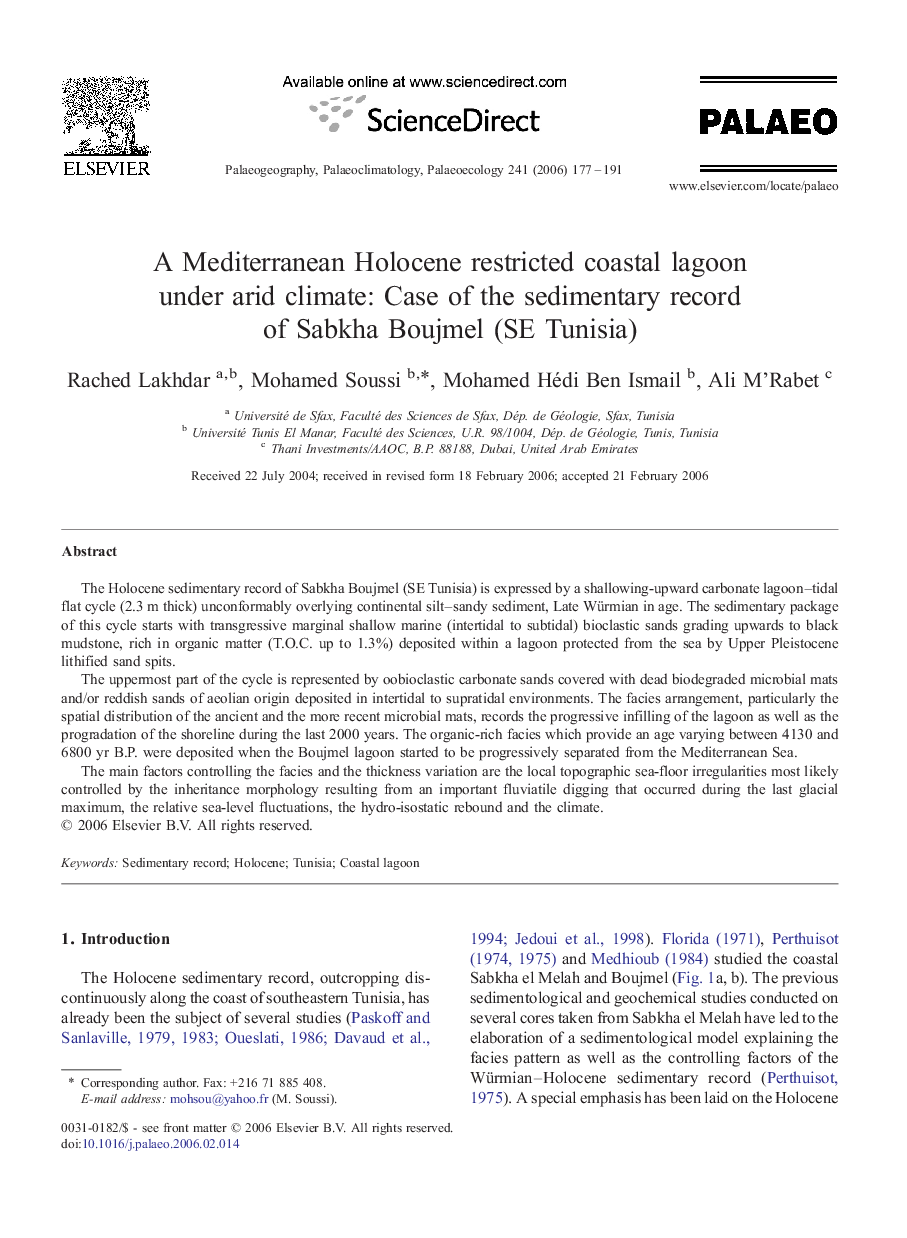| Article ID | Journal | Published Year | Pages | File Type |
|---|---|---|---|---|
| 4469187 | Palaeogeography, Palaeoclimatology, Palaeoecology | 2006 | 15 Pages |
The Holocene sedimentary record of Sabkha Boujmel (SE Tunisia) is expressed by a shallowing-upward carbonate lagoon–tidal flat cycle (2.3 m thick) unconformably overlying continental silt–sandy sediment, Late Würmian in age. The sedimentary package of this cycle starts with transgressive marginal shallow marine (intertidal to subtidal) bioclastic sands grading upwards to black mudstone, rich in organic matter (T.O.C. up to 1.3%) deposited within a lagoon protected from the sea by Upper Pleistocene lithified sand spits.The uppermost part of the cycle is represented by oobioclastic carbonate sands covered with dead biodegraded microbial mats and/or reddish sands of aeolian origin deposited in intertidal to supratidal environments. The facies arrangement, particularly the spatial distribution of the ancient and the more recent microbial mats, records the progressive infilling of the lagoon as well as the progradation of the shoreline during the last 2000 years. The organic-rich facies which provide an age varying between 4130 and 6800 yr B.P. were deposited when the Boujmel lagoon started to be progressively separated from the Mediterranean Sea.The main factors controlling the facies and the thickness variation are the local topographic sea-floor irregularities most likely controlled by the inheritance morphology resulting from an important fluviatile digging that occurred during the last glacial maximum, the relative sea-level fluctuations, the hydro-isostatic rebound and the climate.
